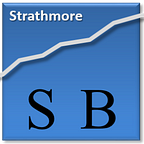Show Me the Money (Part II): 7 Ways to Increase Your Cashflow
Adapted from content excerpted from SME Toolkit.
Whereas the primary goal of any business is profitability, what keeps the business alive is cash flow. Even highly profitable businesses are not likely to survive without sufficient cash flow. Recall: profit doesn’t necessarily mean cash.
Increasing your cash flow reduces the amount of capital tied in your business without impacting the sales. An increased, consistent cash flow also creates a predictable business pattern, making it easier to plan and budget for future growth.
Luckily, there are proven methods to stretch and increase your cash flow. Let us examine them one by one.
- Bill early
The faster your clients pay you, the more capital you have at your disposal. Encourage your clients to settle the bills early by offering early payment discounts and other benefits in return.
If you deal with services and work with clients on project basis (e.g. advertising agencies, real estate services), avoid the big final payment at the end, but strive for breaking the total payment down into monthly retainers. Offering some kind of incentive is again worthwhile, be it value add services or a price reduction. It might diminish your margin, but will help make your cash flow more predictable.
If your clients are really tight on cash, examine the financial products your bank is offering. Invoice discounting might help in certain situations. - Stretch out your payables
Conversely, as someone else’s client you are interested in delaying the payment of bills as much as possible. Take the maximum amount of time allotted to pay your suppliers. Think of these terms as an interest-free line of credit from your supplier. It gives you sufficient time to collect receivables without spending money on short term credit lines.
To enjoy post-payment, you will need to build trust with your suppliers. Trust is built on reliability. Using post-payment terms to the full doesn’t mean cheating and not paying at all. - Take advantage of early payment incentives
On the other hand, don’t forget the early payment discounts your suppliers are offering. Find a balance between delay and the discount. Think of it this way: a 2% on a 30-day invoice is equal to a 24% annual return if the money were invested. Pro-actively negotiate such a discount if the suppliers haven’t offered it themselves in the first place. - Check your pricing
When was the last time you raised your prices? Have your prices kept pace with your rising costs? Many small businesses hesitate to increase their rates because they’re afraid they’ll lose customers. But inflation is ubiquitous in the realities of Kenyan economy. Be sure to check out your competition on a consistent basis. If they increase their prices, you may need to too. - Check your suppliers
Similarly, regularly check your suppliers and compare prices. Make sure you are paying market prices. Check if you are getting the best possible deals on your insurance, phone, internet and other regular business services. Review your usage patterns and get new quotes if your usage pattern has changed. Also, there may be new tariffs introduced that you don’t know about.
Categorise your supplies by where you need to pay for value added services and where you save money by paying commodity prices. For example, you might want to buy your computer hardware from a value-added re-seller who can help you choose the right system to meet your business needs, while you can purchase other items — such as printer cartridges, cables, or off-the-shelf software — from a standard shop.
Examine the possibilities of forming buying cooperatives together with other small businesses who need the same supplies. This will let you enjoy bulk prices for retail quantities. - Tighten your inventory
Overstocking inventory can tie up significant amounts of cash. Regularly gauge your inventory turns to make sure they correspond to your selling patterns. Calculate your inventory turnover, analyse bestselling products, adjust mark-ups to get rid of slow moving goods. Avoid buying more than you know you need when suppliers lure you with big discounts; this can tie up cash. Periodically check your inventory for old or outdated stock, and either defer upcoming orders to use that stock or sell it at cost to improve your liquidity. - Consider renting instead of buying
Renting generally costs more than buying, unless you use a loan to acquire assets. But think whether buying a car or a tool is really justified. Do you have enough business to fully engage the car or equipment? Try it out first by renting. It is never too late to buy when you know you have enough turnover.
At ISBI we strive to give entrepreneurs practical advice based on local practices. Enroll into our Advanced Entrepreneurship Program to learn more and enhance your business. Our next intake begins on Wednesday 6 December 2017.
